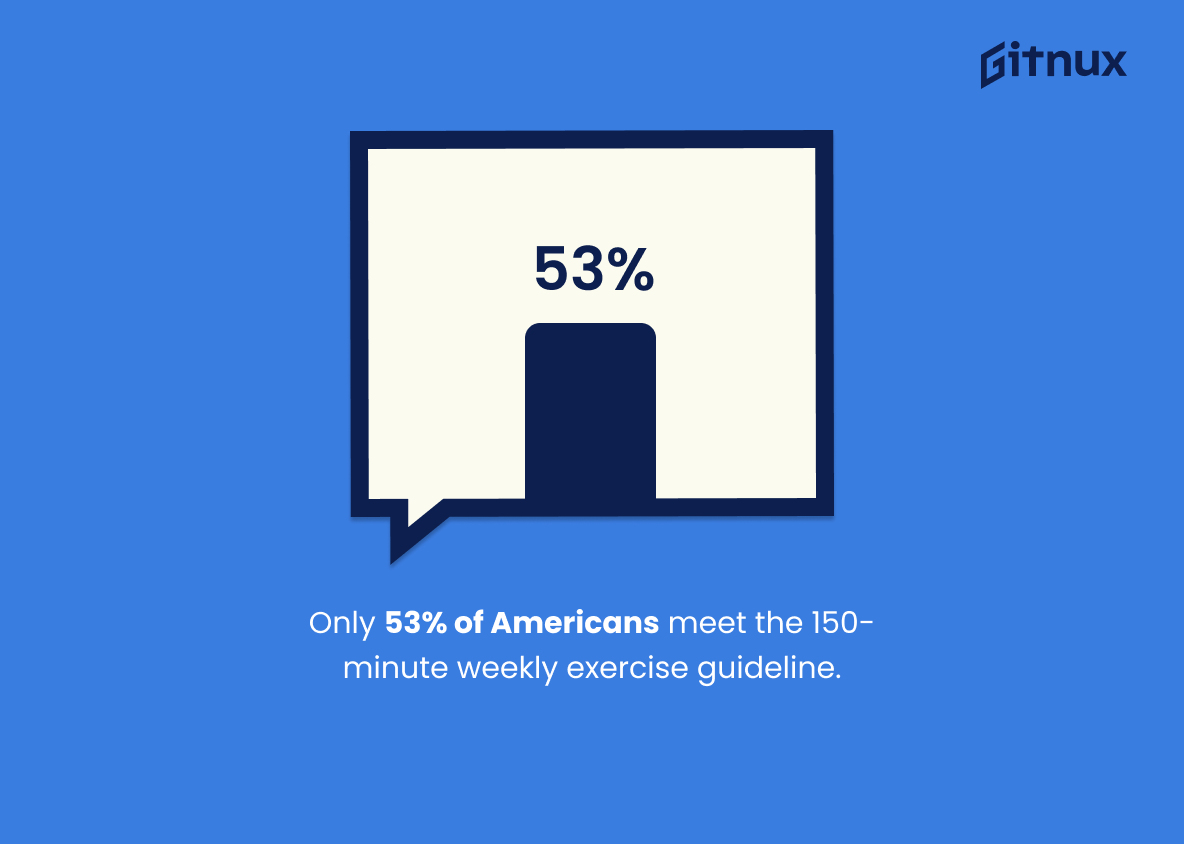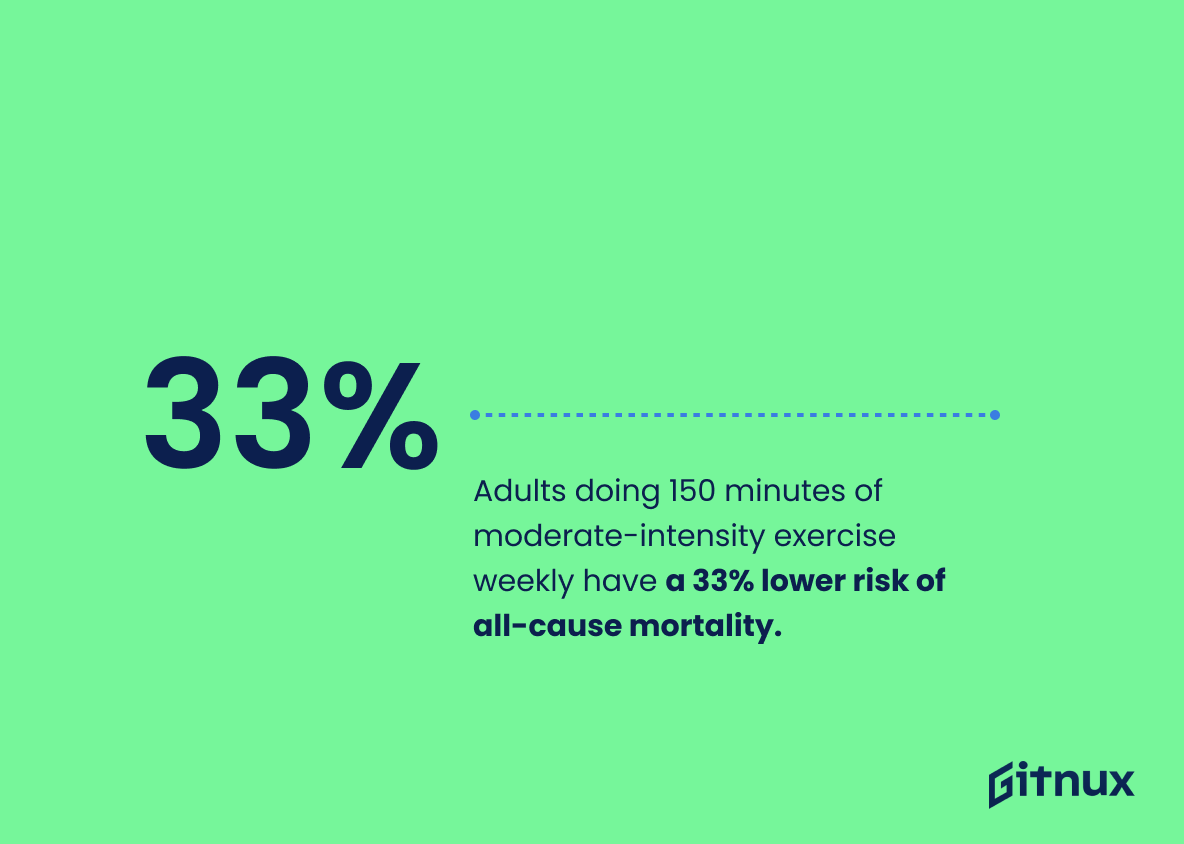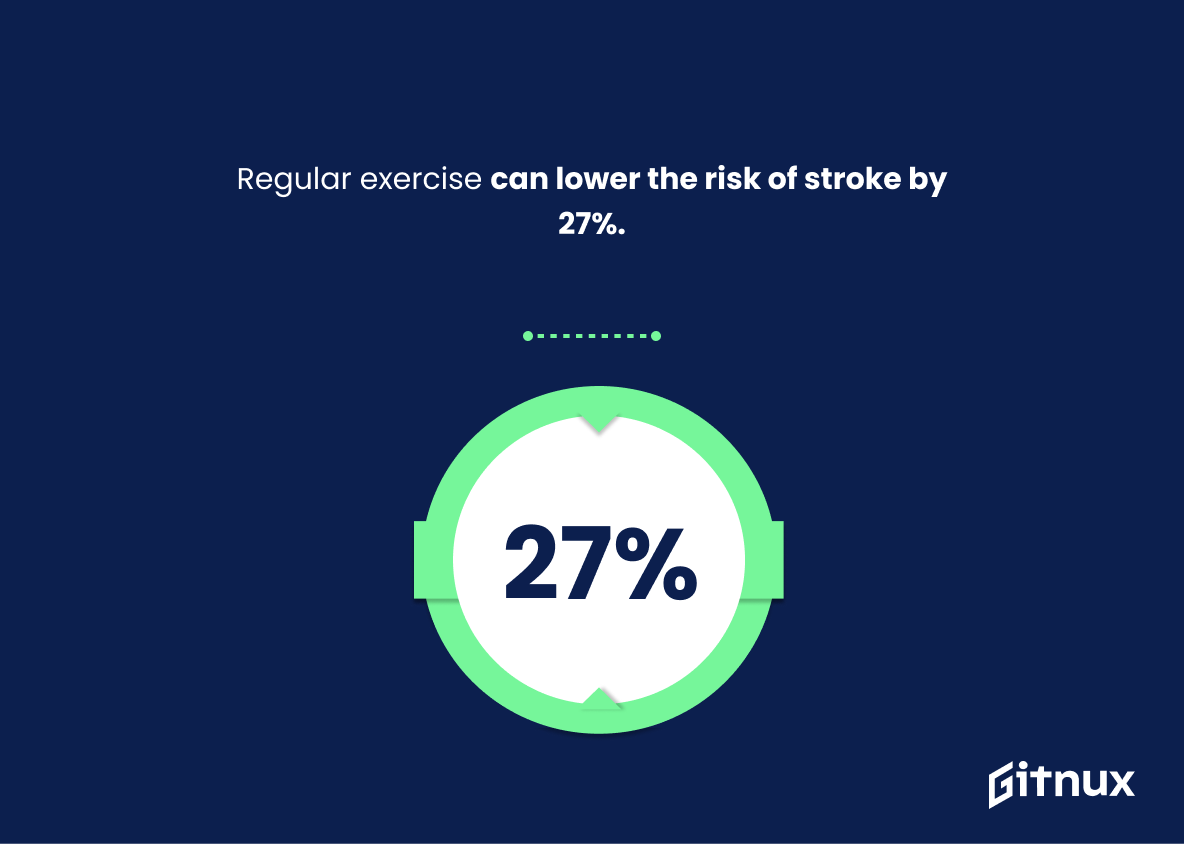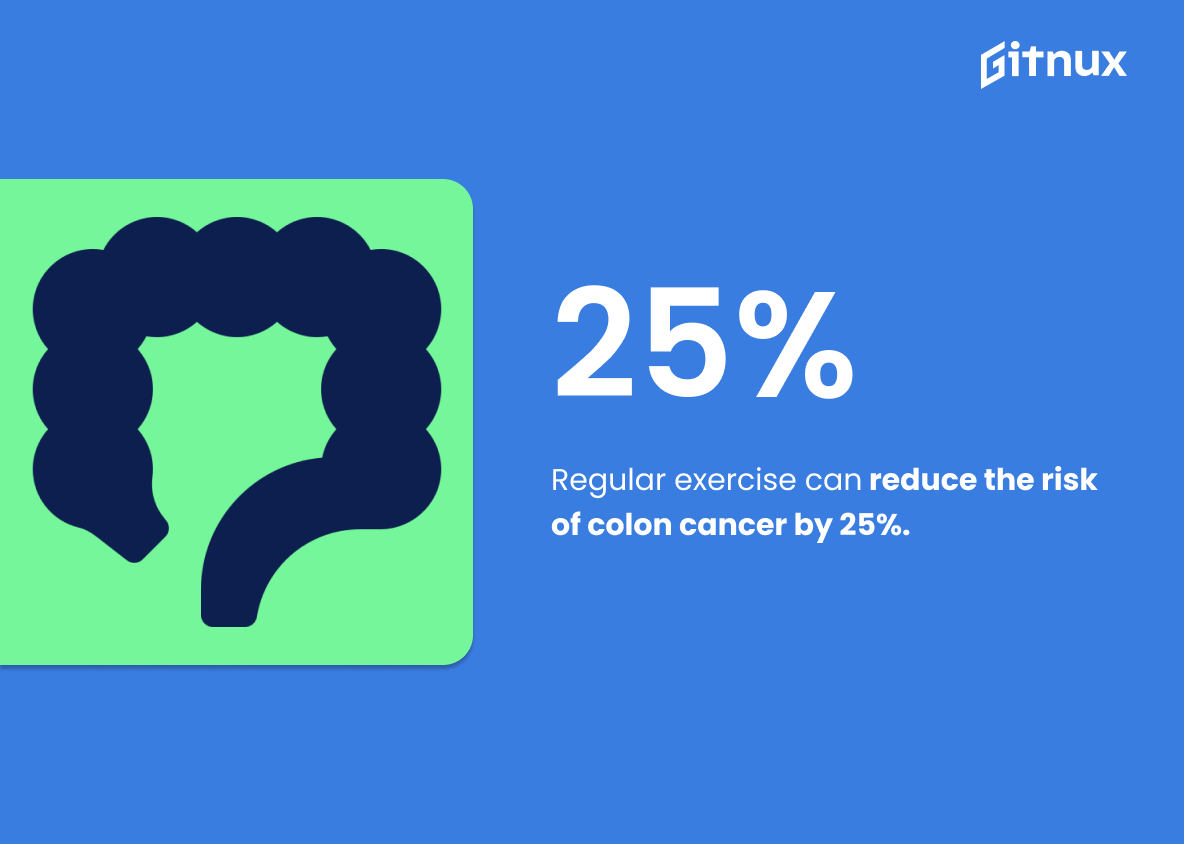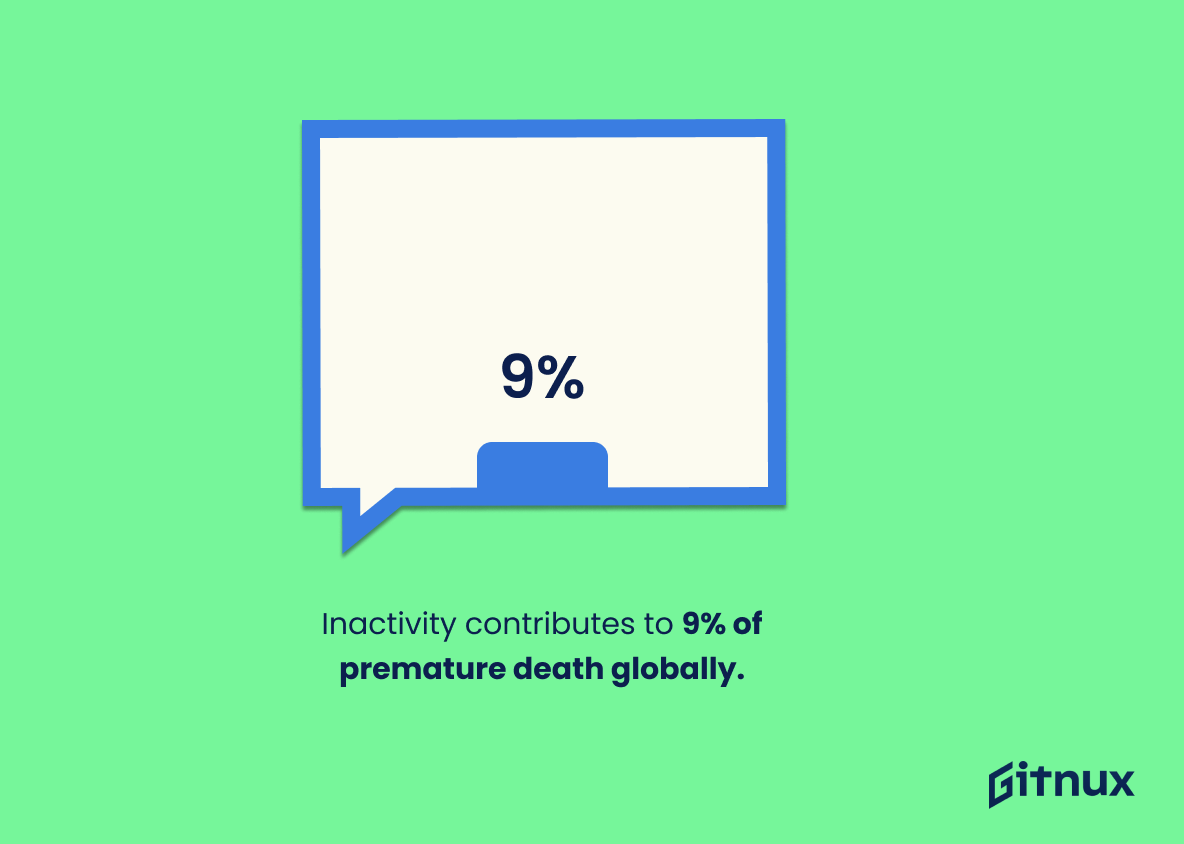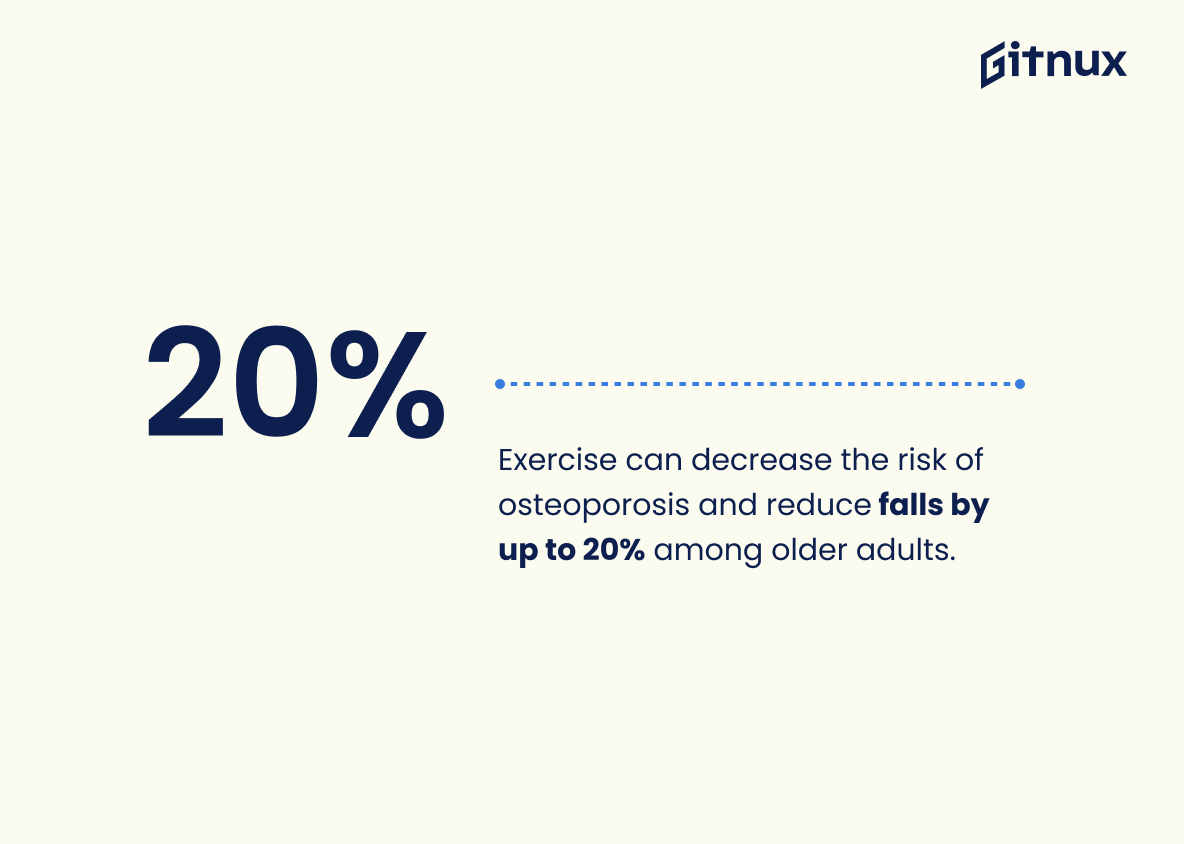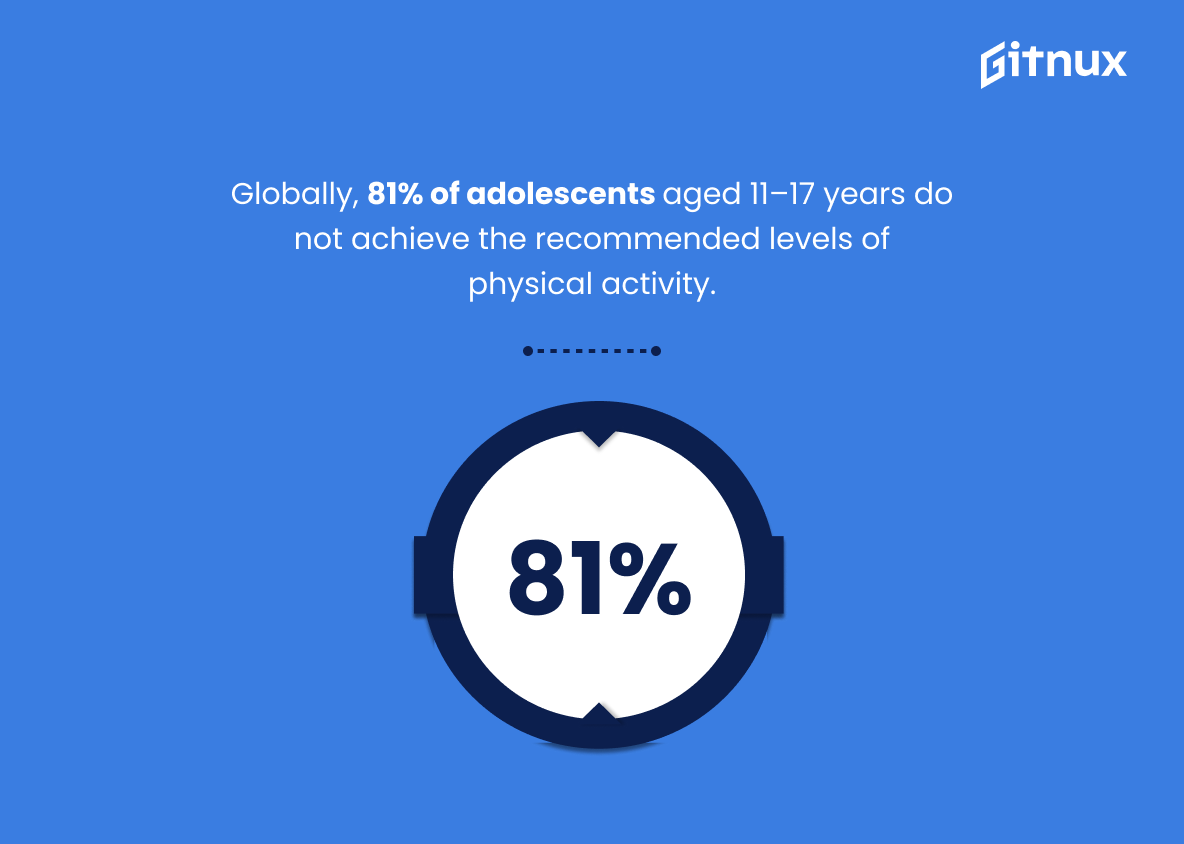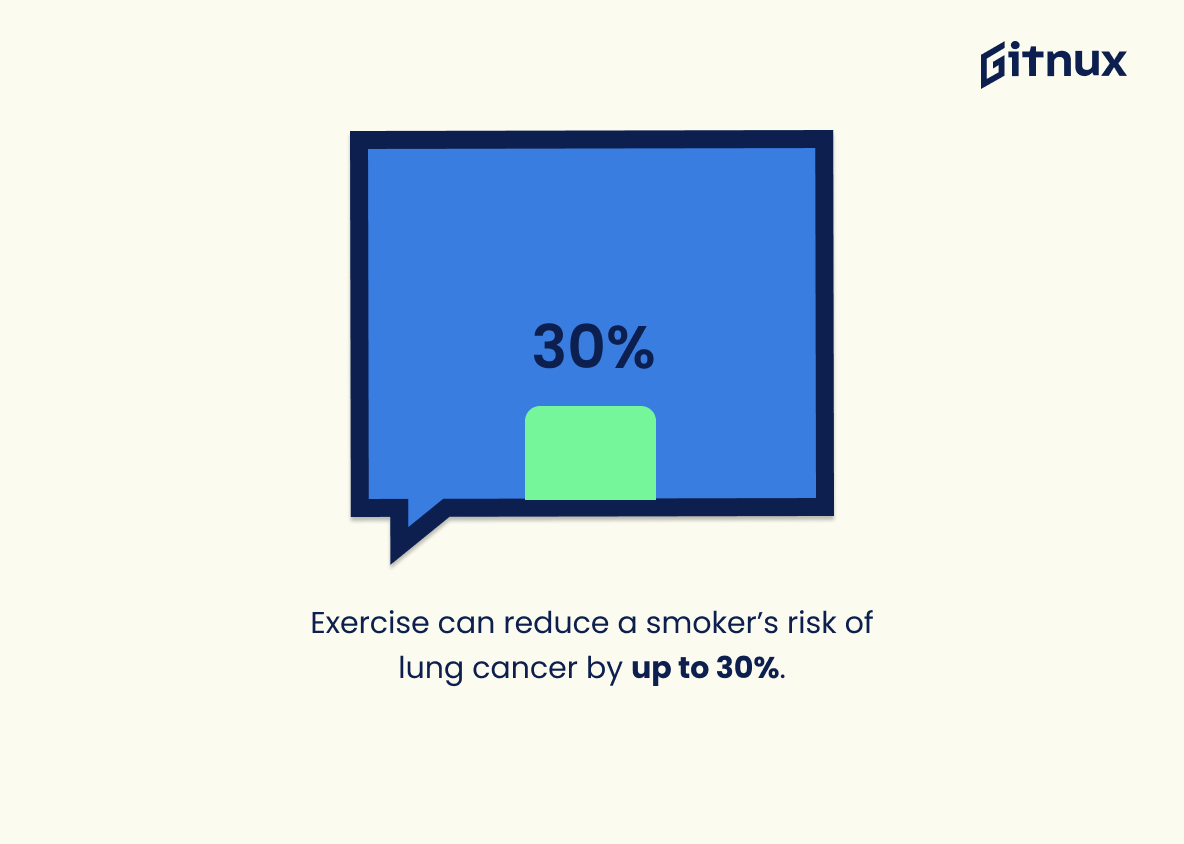Many Americans are not meeting recommended exercise guidelines, with 77.2% of adults failing to meet both aerobic and muscle-strengthening recommendations, according to the US Department of Health & Human Services. Only 23.5% of American adults met these guidelines in 2018. Regular physical activity is crucial for a healthy lifestyle, as it can reduce the risk of heart disease by 40%, but data from Healthy People 2020 in 2019 showed that only 53% of Americans met the recommendation for 150 minutes of moderate-intensity aerobic exercise per week. This lack of exercise contributes to various health issues, including a 27% increased risk of stroke, a 25% reduction in colon cancer risk, and a higher susceptibility to chronic diseases like type 2 diabetes. Inactivity also leads to 9% of premature deaths globally and increases the risk of mental health problems, such as depression.
Furthermore, regular exercise offers various benefits, including a 38% reduction in cognitive decline among the elderly, a 20% reduction in osteoporosis risk in the same age group, and a lower risk of breast cancer by 20-25% through weekly 150-minute sessions of moderate-intensity aerobic exercise. Smoking and lung health can also improve, with a 30% reduction in smoking-related risks, and sleep quality can increase by 65%, with deeper and longer sleep duration. Despite these benefits, many individuals, including 81% of adolescents aged 11-17 in the South Appalachia region, still fail to reach recommended activity levels, contributing to an estimated 3.2 million annual deaths globally due to low sports-related activity participation. Encouraging more physical activity remains a critical public health priority in the fight against various health issues.
This statistic is a stark reminder of the importance of physical activity in the lives of US adults. It highlights the fact that the majority of adults are not engaging in the recommended amount of physical activity, which can have serious implications for their health and wellbeing. This statistic serves as a call to action for individuals to prioritize physical activity in their lives and to make sure they are meeting the Physical Activity Guidelines.
23.5% of US adults aged 18 years and over reported meeting both aerobic and muscle-strengthening guidelines.
This statistic is a powerful reminder of the importance of exercising regularly. It shows that a significant portion of adults in the US are taking the necessary steps to maintain their physical health. This is an encouraging sign that people are taking their health seriously and are making an effort to stay active. It also serves as a reminder that there are still many people who are not meeting the recommended guidelines for physical activity, and that more needs to be done to promote healthy lifestyles.
Exercising Statistics Overview
Exercise can reduce the risk of heart diseases by 40%.
This statistic is a powerful reminder of the importance of exercise in maintaining a healthy heart. It highlights the fact that regular exercise can have a significant impact on reducing the risk of heart diseases, making it an invaluable tool in the fight against this serious condition.
Only 53% of Americans meet the recommended guideline of 150 minutes of moderate-intensity aerobic exercise per week.
This statistic serves as a stark reminder of how far we have to go in terms of meeting the recommended guidelines for exercise. It highlights the need for more education and awareness about the importance of physical activity and how it can benefit our overall health and wellbeing. It also serves as a call to action for individuals to make a conscious effort to incorporate more exercise into their daily lives.
Adults who engage in at least 150 minutes of moderate-intensity aerobic exercise per week experience a 33% lower risk of all-cause mortality.
This statistic is a powerful reminder of the importance of regular exercise in maintaining a healthy lifestyle. It demonstrates that engaging in moderate-intensity aerobic exercise for at least 150 minutes per week can significantly reduce the risk of all-cause mortality. This is an important statistic to consider when discussing the benefits of exercise, as it highlights the potential for exercise to have a positive impact on overall health and longevity.
About 26% of adults worldwide do not engage in adequate physical activity, making them more susceptible to chronic diseases.
This statistic is a stark reminder of the importance of physical activity in maintaining good health. It highlights the fact that a large proportion of adults are not engaging in adequate physical activity, leaving them vulnerable to chronic diseases. This is a worrying trend that needs to be addressed, and this statistic serves as a call to action for people to take steps to ensure they are getting enough exercise.
Regular exercise can lower the risk of stroke by 27%.
This statistic is a powerful reminder of the importance of regular exercise in reducing the risk of stroke. It highlights the fact that exercise can have a significant impact on our health, and that it is worth taking the time to make it a part of our daily routine.
Regular exercise can reduce the risk of colon cancer by 25%.
This statistic is a powerful reminder of the importance of regular exercise in reducing the risk of colon cancer. It highlights the potential of exercise to have a significant impact on our health, and serves as a reminder that we should all be taking steps to ensure we are getting enough physical activity.
Inactivity contributes to 9% of premature death globally.
This statistic serves as a stark reminder of the importance of exercise in maintaining a healthy lifestyle. It highlights the fact that inactivity can have serious consequences, and that regular exercise is essential for reducing the risk of premature death. It is a powerful reminder that physical activity should be a priority for everyone.
Exercise can decrease the risk of osteoporosis and reduce falls by up to 20% among older adults.
This statistic is a powerful reminder of the importance of exercise for older adults. It highlights the fact that regular exercise can have a significant impact on reducing the risk of osteoporosis and falls, two of the most common health issues faced by the elderly. This statistic is a great way to emphasize the importance of exercise for older adults and to encourage them to stay active and healthy.
Only 19.1% of high school students in the US report meeting the physical activity guidelines.
This statistic is a stark reminder of the importance of physical activity in the lives of high school students. It highlights the need for more education and awareness about the benefits of exercise, as well as the need for more opportunities for students to engage in physical activity. It also serves as a call to action for parents, teachers, and other adults to help ensure that young people are getting the exercise they need to stay healthy and active.
Globally, 81% of adolescents aged 11–17 years do not achieve the recommended levels of physical activity.
This statistic is a stark reminder of the importance of physical activity for adolescents. It highlights the need for more education and awareness about the benefits of exercise, as well as the potential consequences of not getting enough physical activity. It also serves as a call to action for parents, teachers, and other adults to help ensure that adolescents are getting the recommended levels of physical activity.
150 minutes of moderate-intensity aerobic exercise per week can reduce the risk of breast cancer by 20–25%.
This statistic is a powerful reminder of the importance of exercise in reducing the risk of breast cancer. It highlights the fact that even a relatively small amount of moderate-intensity aerobic exercise can have a significant impact on reducing the risk of this disease. This is an important message for anyone looking to improve their health and reduce their risk of breast cancer.
Exercise can reduce a smoker’s risk of lung cancer by up to 30%.
This statistic is a powerful reminder of the positive impact that exercise can have on our health. It highlights the fact that regular exercise can significantly reduce a smoker’s risk of developing lung cancer, a disease that is one of the leading causes of death worldwide. This statistic is an important reminder that exercise can be a powerful tool in the fight against cancer and other serious illnesses.
Conclusion
It is clear from the statistics presented that regular physical activity can have a significant impact on overall health and well-being. Exercise has been linked to lower risks of heart disease, stroke, type 2 diabetes, colon cancer, breast cancer and lung cancer. It also helps improve mental health by reducing depression risk as well as cognitive decline in older adults. Additionally, exercise can reduce falls among older adults and help with better sleep quality for all ages. Unfortunately only 23% of US adults meet both aerobic and muscle-strengthening guidelines while 19% of high school students report meeting the recommended levels of physical activity globally 81% adolescents aged 11–17 years do not achieve these goals either. These numbers are concerning given how important it is to stay active in order to maintain good health throughout life – especially during this pandemic when many people are unable or unwilling to go outside due to safety concerns or lack access resources needed for exercising safely at home or outdoors. Therefore it’s essential that we continue advocating for more accessible opportunities so everyone can benefit from being physically active.
References
0. – https://www.cancer.org
1. – https://www.who.int
2. – https://www.stroke.org
3. – https://www.ncbi.nlm.nih.gov
4. – https://www.bones.nih.gov
5. – https://www.hhs.gov
6. – https://www.weforum.org
7. – https://www.shapeamerica.org
8. – https://www.cancerresearchuk.org
9. – https://www.healthypeople.gov
10. – https://www.cdc.gov

